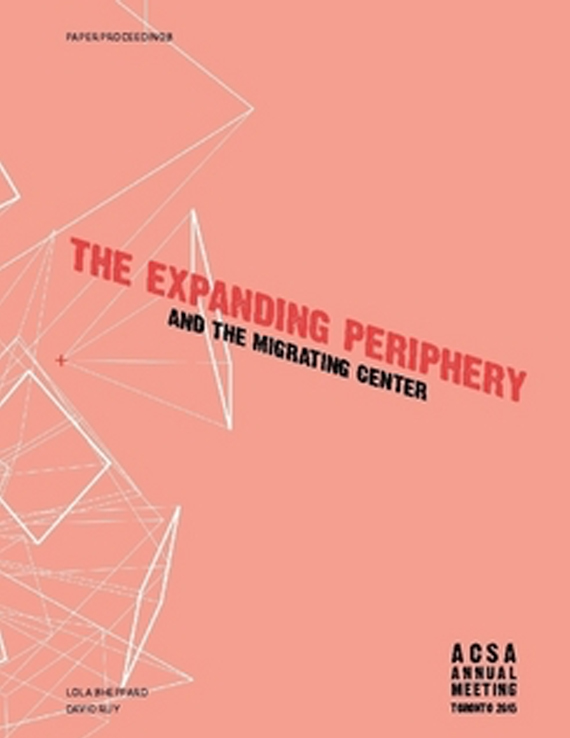Author(s): Carla Leitão
In the past 3 years, I worked with students in upper years architecture and urban design studios, as well as thesis projects, upon the concept of Cloud Architecture.These studios wanted to inquire upon a series of methodological inversions and subversions of the relationship between matter, material, program, space, information and energy in architecture design. The studios’ goal was to look into the possibility of architecture design conceptualized from its microstructure, seriously playing along the way with several approaches of design that would roughly resemble bottom-up, and agent-based design, without necessarily imparting known methodologies of the fields of architecture and urban design with them usually associated – nor being bound to their objectives of research.The Cloud studios had 3 themes:The first studio – CLOUD Archive/Institution/Transvercity – looked at the design of Cloud Structures with the capacity to create or inspire novel forms of institution within or across other environments: of being both an archive/library and an education/promoter of protocols that would insure conservation, repetition of chosen themes, operators, programs, spaces, objects.The second studio – CLOUD Disassembly – looked into Cloud Architectures that could disassemble other architectures as well as themselves. The context for this search was to look into the architecture and urbanism of large temporary (mainly sports) events – World Cup, Olympics, but also World Expo, among others -, and their promises and shortcomings economically and culturally to their host cities as well as in the larger context of global awareness on buildings environmental impact.The third studio – CLOUD Reassembly – proposed an enquiry into the possible new structures of order that can be found or (re)created in scenarios of catastrophe or disaster, in the preparation, duration or aftermath of radical cross-sectioning events of destructive force.Across the three Cloud Studios, there was a focus on the condition of transversality – the cloud studios were called transverse cities: a pervasiveness of repetition that would be like a ‘fog-matter’ capable of light-terraforming existing landscapes and suggesting possibilities for new hybridized ones.One aspect of Cloud Architecture programs and responses is the way it reevaluates the starting body that triggers the tectonic of space design – and with it, of the information set that is specific enough to be generative of such tectonic. Rather than using existing typologies, there is a so-to-say ‘suspension of gravity’ towards known protocols and, a retooling of the development around the desired and proposed exchanges of information across select bodies.Another aspect is its rhetoric of ‘distributed architecture’ and how this ‘plays with fire’ regarding the culture of the discipline and ideas of political ideology and organization. If architecture looses its massive front face and instead gains subtle and near invisible fingers this can quickly become bad news as far as privacy and transparency can be easily linked to produce modes of population control, and mediocre political and economic landscapes from a social and cultural perspective, such as the ones whose results we have been experiencing in the last decades.
Volume Editors
David Ruy & Lola Sheppard
ISBN
978-0-935502-95-4

 Study Architecture
Study Architecture  ProPEL
ProPEL 
